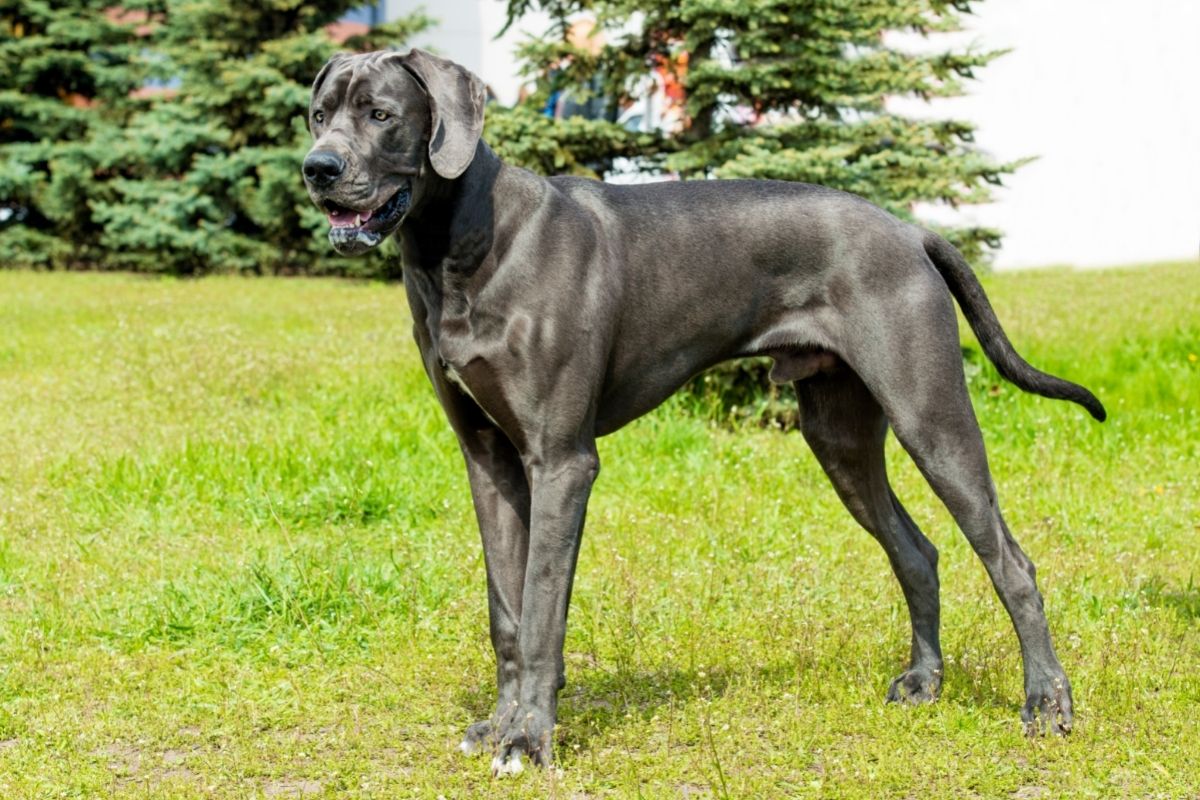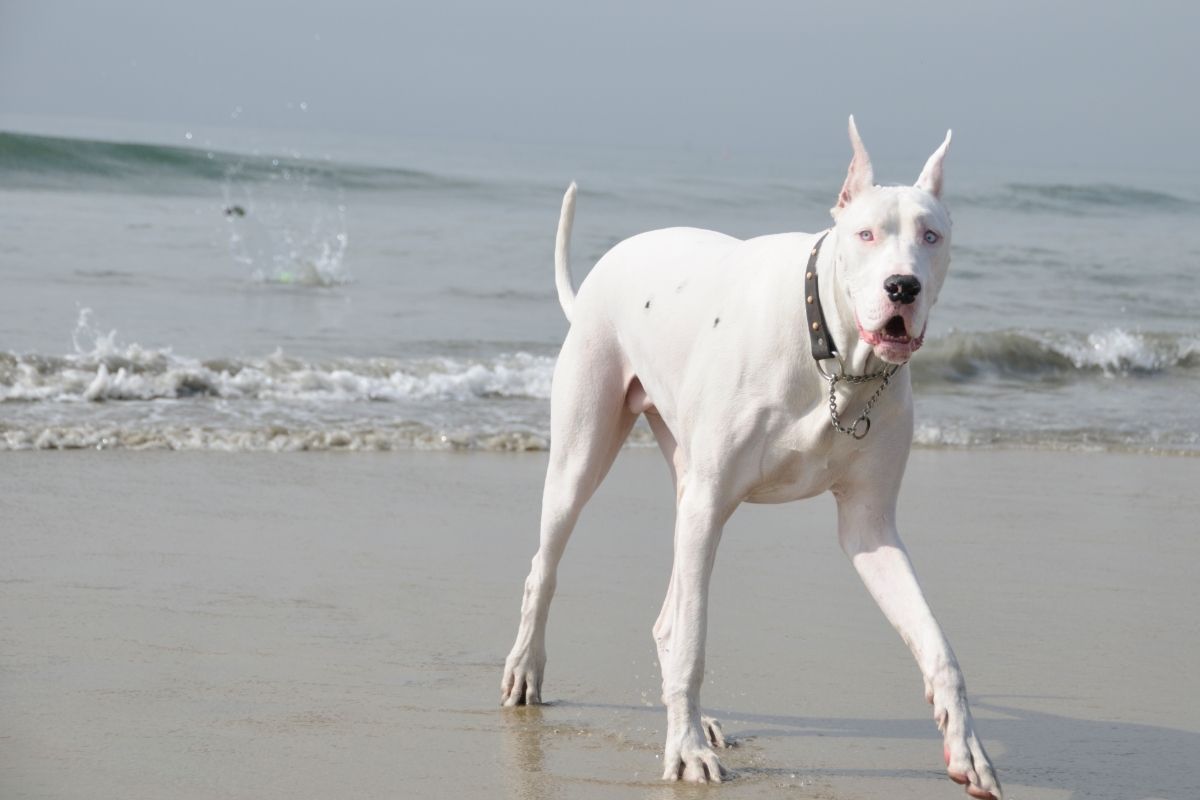The Great Dane Life Span
When choosing a dog for your family, you might want to learn about Great Dane Lifespan! So, how long do Great Danes live? Like any other dog breed, the Great Dane has specific care requirements.
Although you can apply basic advice to this breed, such as proper nutrition, routine grooming, and exercise, consider other guidelines when bringing this gentle giant into your home.

How Long do Great Danes Live?
How long do Great Danes live? The Lifespan of a Great Dane is six to eight years, but some are known to live for 10 or 12 years. Unfortunately, some Great Dane’s lifespan is short due to health problems such as gastric torsion (bloat) or hip dysplasia.
The World’s Oldest Great Dane to Date
According to Guinness World Record, Freddy is the oldest Great Dane on record and the tallest living dog globally at seven years old. Measuring three feet (91 centimeters) and 4.75 inches (103.5 centimeters) tall and weighing 196 pounds (88.9 kilograms).
Freddy received its title in December 2016 when it was just four years old. In standing position, the old Great Dane is a whopping seven feet and 5.5 inches (227.33 centimeters) tall – making him an impressive sight!
Things to Know Before Getting a Great Dane
Great Danes are big dogs. They’re so big that they can grow up to be taller than some children. But despite their size, these gentle giants are loyal and loving companions who make great companions for families with older children or adults.
But there are some things to know before getting a Great Dane puppy. Here’s what you should know about the Great Danes:
They’re Huge!
Great Danes grow quickly, and they’ll reach an adult size of about 30 inches (76.2 centimeters) tall at the shoulder and between 100 and 120 pounds (45.4 and 54.4 kilograms) by their first birthday. So if you plan on getting a Great Dane puppy, make sure you have plenty of space available as it grows up — and once it is full-grown.
They Don’t Shed Much Hair
Great Danes have very little undercoat (or none), so they don’t shed nearly as much as other breeds do. That makes them ideal pets for people with allergies or asthma who may not be able to tolerate other breeds’ shedding fur.
They Require Regular Grooming
In addition to being non-shedding, Great Danes are also relatively easy to groom compared to other large breeds because they have short, smooth coats. However, they still require regular brushing to remove dead hair and keep their coats healthy.
They’re Gentle Giants
Great Danes are quite gentle and even-tempered by nature despite their large size. They make great family pets as long as they’re properly socialized from a young age and introduced slowly and carefully to small children.
Why do Great Danes Die so Young?
Great Danes are known to be one of the largest dog breeds in the world. They are commonly known as gentle giants, but they are not. Instead, they are big and deceptively strong. Unfortunately, even Great Danes die young, so let’s figure out why the longest living Great Dane dies.
Hip Dysplasia
This is where the hip socket does not fit properly into the thigh bone, causing pain and inflammation in the joint. This can lead to lameness and arthritis in later years if not treated.
Bloat
Bloat or Gastric Dilatation Volvulus (GDV) occurs when the stomach twists on itself, which can be fatal if not treated quickly enough. A bloated dog will have painful breathing and may pass out and have a distended abdomen with gas bubbles visible under the skin or in a bloated stomach on x-ray examination.
Cardiomyopathy
This is a heart condition where the heart’s muscle becomes thin and weak and cannot pump blood properly. This can lead to congestive heart failure, arrhythmias, and sudden death.
Cancer
Cancer is unfortunately common in all dog breeds, including Great Danes. The most common types of cancer in Great Danes are:
- Osteosarcoma (bone cancer).
- Hemangiosarcoma (cancer of the blood vessels).
- Lymphoma (cancer of the lymph nodes).

Helping a Great Dane Live Longer
There are many ways to help a Great Dane live longer. A great deal of the responsibility to make sure your Great Dane lives a long life is up to you. Here are some ways to increase the Great Dane’s lifespan:
Feeding Your Great Dane the Right Diet
Feeding a balanced diet is essential to keep your Great Dane healthy. There are different types of dog food available, including vegetarian and vegan diets. You should speak with your vet about which type of food would be best for your dog, depending on age, health issues, and activity level.
Your vet may advise you to use supplements such as glucosamine or omega-3 fatty acids to help keep joints healthy and reduce pain associated with arthritis or hip dysplasia.
Keeping Your Great Dane at a Healthy Weight
Obesity is one of the most common health problems in dogs today, and it’s no different for Great Danes. Obesity may compromise the Great Dane’s life due to health issues such as arthritis, heart disease, and diabetes mellitus (high blood sugar).
If you have an overweight Great Dane, ask your vet about how much weight they should be losing each month until they reach their ideal weight range for their breed. They may recommend cutting back on treats, feeding smaller meals more frequently, or adding moderate exercise to their routine.
Regular Exercise
Great Danes are a relatively active breed, but they still need regular exercise to stay healthy and fit. A good daily walk or play session in the yard will suffice for most adult Great Danes, but puppyhood is different.
During their first year of life, Great Dane puppies grow rapidly and require a lot of food to support their growth. They also need plenty of exercise to prevent joint problems later in life. For this reason, it’s important to find a balance between feeding and exercising your Great Dane puppy so it doesn’t become overweight or underweight.
Providing Mental Stimulation
Apart from physical exercise, dogs need mental stimulation to stay happy and healthy. This may be possible in the form of interactive toys, food puzzles, or training games. Great Danes are intelligent dogs and can get bored easily if not given enough to do.
Boredom can lead to destructive behaviors such as chewing furniture or digging holes in the yard. Providing your dog with plenty of mental stimulation will help keep them out of trouble and improve their overall well-being.
Regular Vet Check-ups and Preventive Care
Taking your Great Dane to the veterinarian for regular check-ups is important to catch any health problems early on. Your vet can also recommend vaccinations and other preventive measures to help keep your dog healthy.
Some common health problems that affect Great Danes include hip dysplasia, elbow dysplasia, osteochondrosis (a cartilage disease), and cancer. Great Danes have a relatively short lifespan compared to other dog breeds.
The average Great Dane life span is 6-8 years, though some may live as long as ten years with proper care. While there is no surety following these tips will help your Great Dane live to a ripe old age, it’s certainly worth trying!
Are Great Danes Good Companions?
Great Danes are large and impressive dogs. They have a somewhat regal air about them and can be quite imposing. Because of their strength and size, they can be intimidating to some people.
However, once you get to know them, they can be among the most affectionate and loyal companions you’ll ever find. Great Danes are affectionate towards their owners and usually get along well with other pets in the home.
They like following their owners around and enjoy being near them. However, if left alone for long periods. They may become destructive or unhappy, especially young or untrained. Great Danes need plenty of exercise throughout the day and plenty of physical affection from their owners at all times.
While Great Danes can be good apartment dogs for older children who live in urban settings, they are not fit for small children due to their large size and energetic nature. This breed does best when it has plenty of room to run outside. Then, it can use its energy on other activities besides chewing furniture or jumping up on people walking by outside your window.

Final Thoughts
So while Great Danes may not be the longest living breed, they are one of the most adorable creatures. With their big personalities and giant size, it’s hard not to love these dogs. And if you do happen to own a Great Dane, you can rest assured knowing that you’ve got a friend for life.


2 thoughts on “How Long Do Great Danes Live?”
Comments are closed.